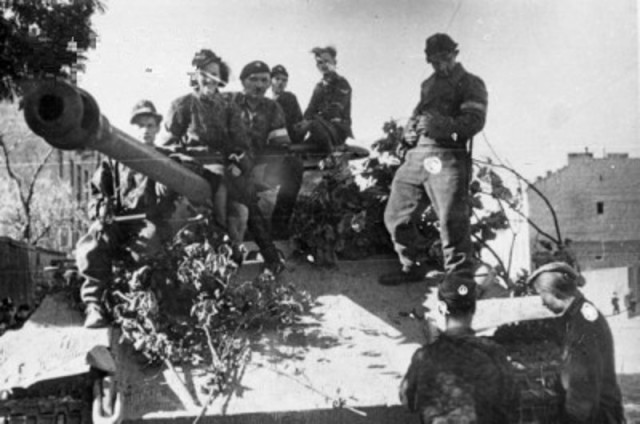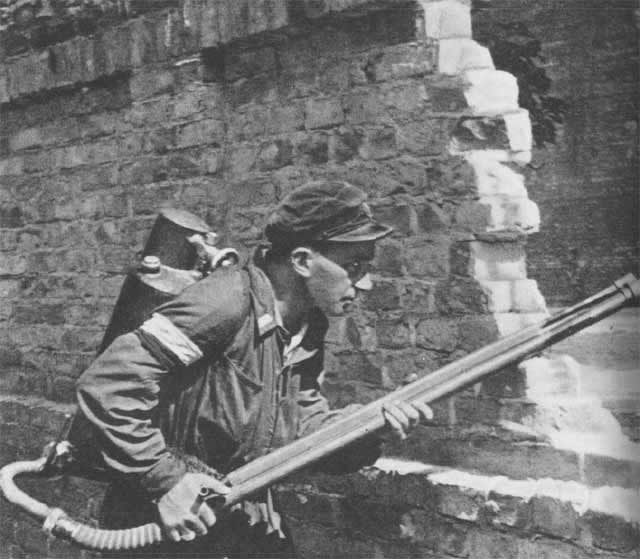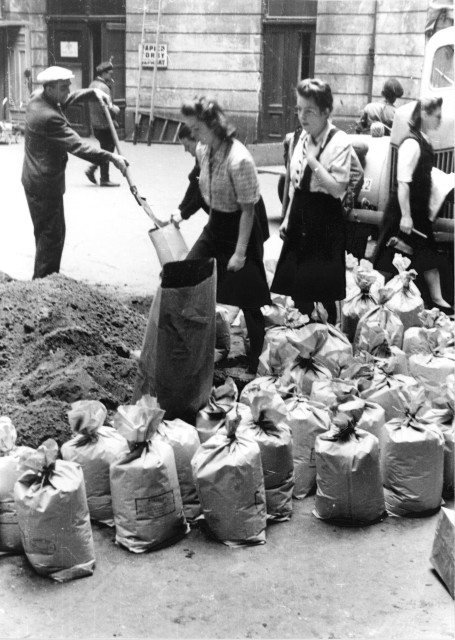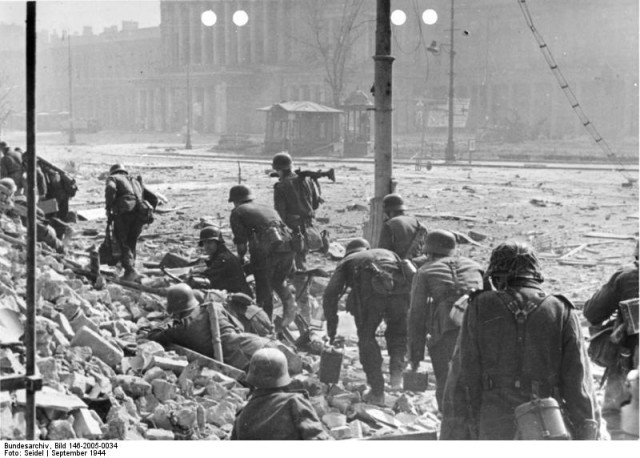Throughout World War II, the people of Poland were stuck between Nazi Germany and their old enemy the Russians. Occupied by Nazi Germany since 1939, the prospects for their freedom looked very bleak indeed come 1944. Poland was faced with either Nazi rule or domination by the Russians.
Russia’s army was now rapidly approaching from the East and after the Katyn massacre (when Russia executed thousands of Polish officers), fighting between Polish partisans under the Polish Home Army and the Soviet Partisans in Poland, and Joseph Stalin’s thirst to draw more countries into the Soviet Block, many Poles were worried one conqueror would simply be replaced by another.
With this bleak prospect looming on the horizon of a still bleak situation, Commander Tadeusz Bór-Komorowski of the Polish Home Army, devised Operation Tempest: a huge, coordinated effort by the underground resistance to rise up across Poland, focused on Warsaw, to kick the Nazi’s out before the Russians swept into the major cities on the West side of the Vistula river. It became the largest military operation by any resistance movement in an occupied country in World War II.
Though wary and distrustful of the Russians, the Home Army timed their uprising with the approach of the Red Army through Eastern Poland, with the hopes that they would offer some assistance or, at least, divert the Germans away from Warsaw. In fact, almost the opposite was true.
As President Trump explained, “From the other side of the river, the Soviet armed forces stopped and waited. They watched as the Nazis ruthlessly destroyed the city, viciously murdering men, women and children. They tried to destroy this nation forever by shattering its will to survive.”
The Polish strategy had been to quickly take command of the Polish capital in between the German retreat and ahead of the Russian advance. This action would allow the Polish forces to be masters of their own home and, as it was believed, would hinder the Soviet threat to Polish sovereignty.
However, with the Soviet offensive halted, and Stalin not allowing American and British planes permission to land on Soviet-held Polish territory to refuel, thus inhibiting sufficient Western aid from reaching the Warsaw fighters, the Germans were free to methodically and brutally crush the Warsaw Uprising.
First-hand accounts from people living in Warsaw at the time claim that Russian planes that were heard constantly flying missions against the Germans in the weeks before, Operation Tempest suddenly stopped all activity when it began. Stalin had ordered his troops to halt their advance towards Germany. He even issued direct orders that all support for the Home Army’s efforts should be cut off and any Home Army units in Russian-controlled areas should be apprehended and disarmed.

Many of the Polish resistance forces had been training in urban combat for years in preparation, but weren’t ready for a prolonged struggled against the professional German army and vicious SS troops.
The German’s reaction to the uprising was swift and brutal. Hitler ordered Heinrich Himmler of the Waffen SS to direct mass, indiscriminate executions of citizens.

The Nazis quickly noticed, however, that the mass killings only seemed to strengthen the resolve of the Polish resistance fighters and changed their strategy to focus on the military operation to take back the city, street by street, house by house. The Home Army had between 20,000 and 50,000 active fighters. The Germans began with some 25,000 troops, which was soon increased with more reinforcements and tanks to retake the city.
The battle quickly became a bloody stalemate with the Germans using everything from continuous, widespread bombings, to tanks with human shields. The Poles had set up many barricades and ditches, however, making any progress by German armor very slow.
Through the month of August, the Germans made slow, steady progress retaking the city. Section by section, the resistance fell. By early September, Bór-Komorowski agreed to talks with the Germans, which made progress for several days and achieved things like the evacuation of 20,000 civilians.

This brought a great deal of renewed hope to the Home Army and the Poles of Warsaw. Unfortunately, all help they finally did receive was either too little, too late, or both. Not wanting to anger Stalin, it took Britain and America a woefully long time to airdrop supplies to Warsaw. These drops, containing food, weapons, ammunition, medical supplies, etc., were too few and often landed in German-controlled areas.
Perhaps the biggest boost to Home Army moral came when General Zygmunt Berling of the Soviet’s Polish First Army committed troops to send over the Vistula to reinforce his countrymen. Had this move come several weeks earlier, it might have been a huge help. However, after weeks of fighting, the Germans had regained control of all but a small sliver of the Vistula’s West bank. Even with some artillery and air support from the Russian Army, Berling’s units attempting to cross the Vistula met with very little success. About 900 men managed to get across and help their comrades. This was outweighed by very heavy losses- some 5,600 casualties.

The Germans then proceeded to level much of the city, between destruction from the war, earlier uprisings in Warsaw, and now the reaction to Operation Tempest, about 85% of Warsaw was totally destroyed. The Germans put particular focus on destroying monuments, museums, academic institutions, libraries, and archives. Warsaw’s physical presence, history, and culture were being wiped from the face of the map, time and memory.
After the Russian’s “liberated” Warsaw and the rest of Poland and instituted a Soviet rule, talk of the Warsaw Uprising was actively suppressed. Many leaders of the Home Army and other Polish resistance were smeared as Nazi collaborators, put through mock trials and sent to the Gulags. It would be many decades before the brave freedom fighters of Warsaw were to be commemorated by a small monument to their memory and heroism. Only today is the bravery of the Home Army being recognized in their native land.




Great history, Mr. G! Love of all it. I learn so much each time you post. I am sharing this as history seems to be lost on so many.
ReplyDeleteThe inhumanity of BOTH the Russians and Germans is just stunning... From a city of almost a million to nothing for all practical purposes in less than a year.
ReplyDelete